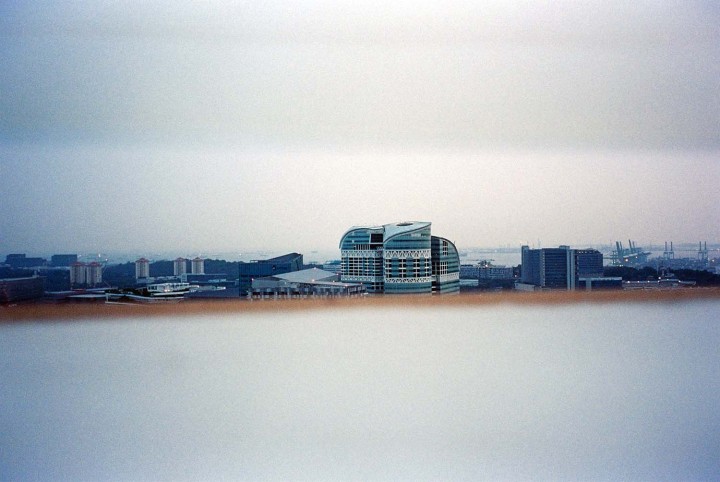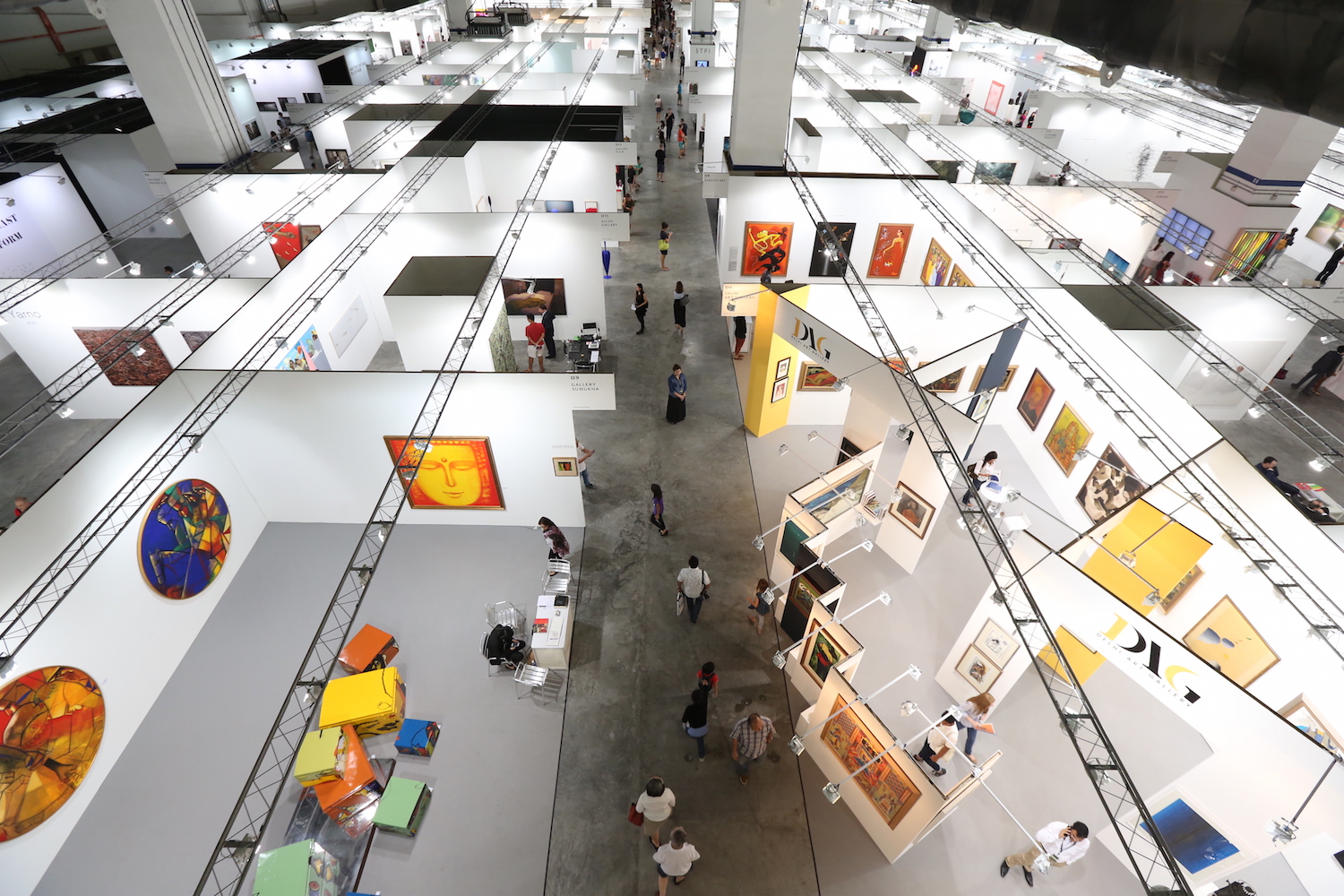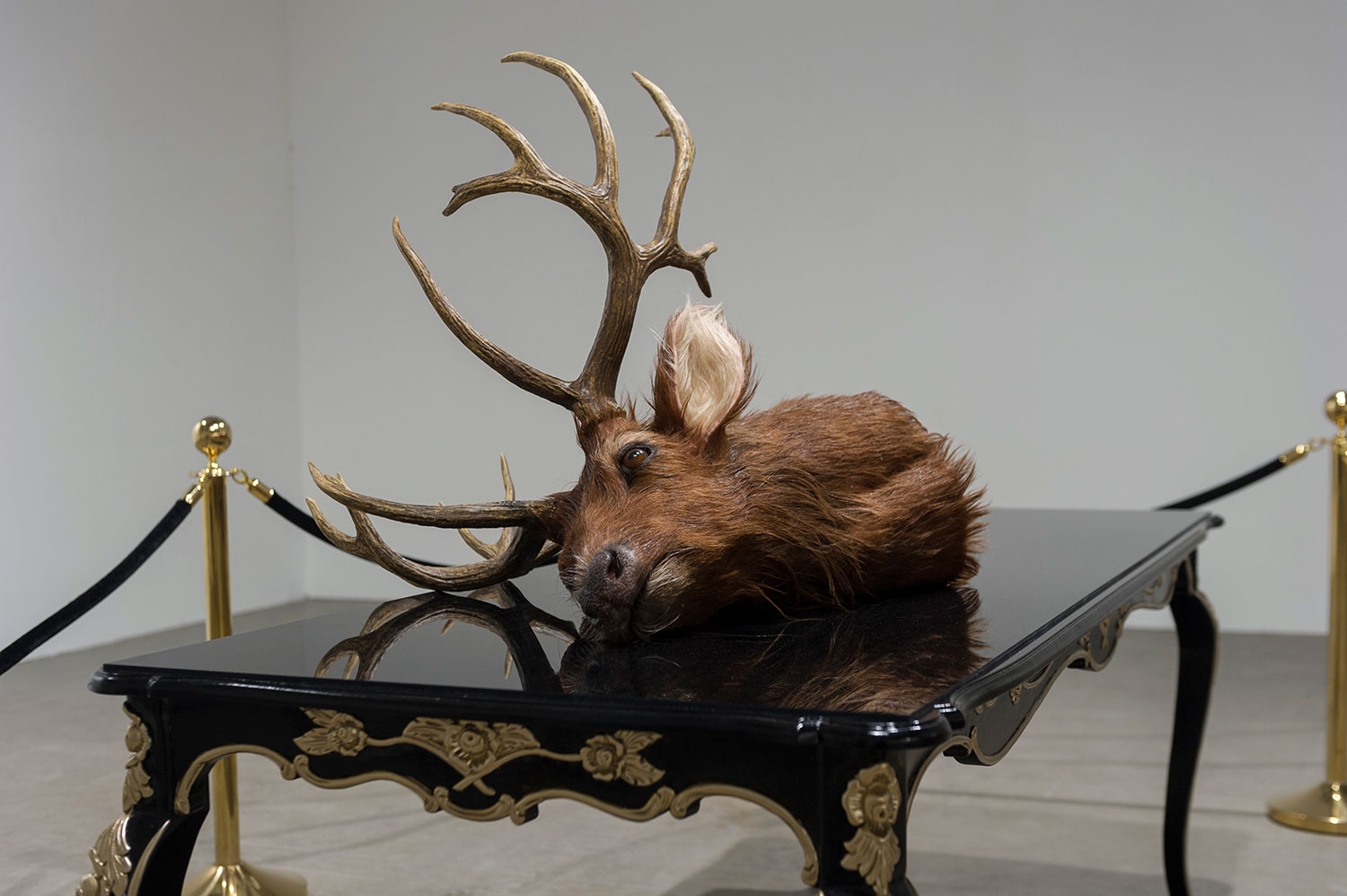We were in a movie theater when we saw the promotional video for the grand unveiling of the National Gallery Singapore, in the newly renovated former Supreme Court and City Hall buildings. Between archival imagery of the colonial Singaporean army and shallow-focus footage of curators hanging paintings emerged the following intertitles:
Criminal masterminds were once sentenced to hang here.
Iconic masterpieces now hang on the walls instead.
Between more archival imagery and dizzying drone footage of the museum’s interior renovation:
Its steps saw the rise and fall of an empire.
And the birth of a nation.
The video proceeded with a sped-up techno soundtrack and a rapid-fire montage of cropped paintings, intercut with proclamations about educational services, dining experiences and an innovative smartphone app, before ending with a final demand to:
Experience Modern Southeast Asian Art.
This “trailer,” with its blithe lack of self-criticality, was funny and aggravating in its claim to assimilate colonialism, governance, luxury consumption, modernity and art production. What might have been a Hans Haacke–style expose of the entanglement of political and private interests is here laid bare by the institution itself. Thus, even an affirmative review of the National Gallery published in the Financial Times is tinged with a certain perversity:
…Singapore has managed something special — the rehabilitation of buildings of political control and their seamless absorption into the sphere of culture.1
Singapore is an exemplary model of a city-state. It is possible to think of Singapore as less a place than a fascinating system, where mechanisms of control have been historically developed and enforced to such a degree that, among most of its citizens, a deeply internalized repression of oppositional thinking has taken place. People are the primary resource of this tiny island, and they feed the broader intelligence and functionality of this system by forfeiting their autonomy. What has felt coercive and violating in the past, today feels normal, numb and busy. This subduing of the populace has made it a safe zone for transiting, for extracting and processing regional resources, and for servicing global trade and transaction. Built to house a Southeast Asian modern and contemporary collection that is unprecedented in scale, the National Gallery is in some sense coextensive with this, as Singapore continues to push to consolidate regional cultural capital.
The grounds for such a project have been prepared by the relatively recent rise to prominence of the discourse around Southeast Asian modern and contemporary art history — a discourse that started to gain traction in the 1970s, but matured in the 1990s, alongside the emergence of certain large-scale recurring exhibitions in the broader area (in particular the Asia Pacific Triennial at the Queensland Art Gallery and the Fukuoka Asian Art Triennale), where a distinctly Southeast Asian network of historians, curators, writers and artists began to be delineated. The Singapore Art Museum, opened in 1996 with a mission partly focused on acquiring Southeast Asian art (some of which would be inherited by the new National Gallery), provided another important touchstone for this delineation. A generation later, this network of actors would take on the feel of an elite club, with members convening at various symposiums, think tanks, residencies, research trips, “significant exhibitions,” vacations, etc. This has resulted in a somewhat compact but multi-pronged and highly sophisticated discussion, in which comparative analyses, descriptive accounts of exchange and transmission (of beliefs, images, ideologies, etc.) and historical re-mappings are the primary tools for constructing a defense of a particular transnational unity that could compete with, supplement or critique other such frameworks (most notably, still, “the West”).
It is this highly motivated construction of Southeast Asia that is on display at the new National Gallery, where, among other works, a fascinating collection of oil paintings depicting the multiple revolutionary nationalist uprisings that took place in the region’s post-WWII climate are allotted honorary significance in these marble chambers. Notably, almost half of the works currently on view have been loaned, many from private collectors, with contracts ranging from six months to five years, meaning that the seemingly permanent exhibitions will sporadically shift, requiring constant curatorial handling. This mutable structure is certainly an appealing proposition, albeit stemming out of the fact that national art histories in Indonesia, Malaysia, the Philippines are largely in the private hands of local elites, so that underfunded national museums and galleries in places like Jakarta or Manila are only able to construct highly abbreviated and often incoherent versions of such histories.
Singapore steps in to correct and exploit these inefficiencies. If it’s vital to place these artworks in relation to each other, rather than constricting them to individual nation-bound histories, then the fact that the conditions for this kind of expanded narrativizing would be enabled by the funding of a small and globally integrated financial capital, one that functions as a consolidator and debt collector of regional economies, and one that severely limits domestic artistic agency in the present tense, in many ways adds a further layer of complexity to any potential reading. In blunt terms, the National Gallery project is but one arm of an expansive top-down cultural agenda, geared towards maintaining status in a globalized neoliberal economic system. As a former Singaporean Minister of Information, Communications and the Arts was quoted as saying, “It may seem odd, but we have to pursue the subject of fun very seriously if we want to stay competitive in the 21st century.”2 Other strategic initiatives include the establishment of a biennial in 2006 and an art fair in 2011. In 2012, the government re-purposed a cluster of military barracks into a contemporary art district known as Gillman Barracks, which currently houses several commercial galleries, a research institute, and some nonprofit art-related organizations, as well as a handful of restaurants and bars. This effort to stimulate domestic interest in contemporary art has faltered, however, and multiple galleries at Gillman Barracks have had to close shop, unable to find a strong local client base. Another initiative, which has proven more successful, is the establishment of Le Freeport on the grounds of Singapore’s Changi Airport. Opened in 2010 by a Swiss company, this vault-like “offshore” storage site for high-value collectibles allows collectors of contemporary art to store, display, buy and sell items without having to face taxes or import duties, or even having to declare these items’ value. According to the Freeport’s website, “operations are conducted with the support of the Singapore Customs, the Singapore Police, the Civil Aviation Authority of Singapore and the Economic Development Board.”
Having been infamously described by Rem Koolhaas as a “city without qualities,” Singapore’s attempts to mediate both the emergent discourse and market around Southeast Asian art is tinged with a certain degree of compensational desperation. Nonetheless, with no regional competition in terms of logistical expertise, financial clout and governmental efficiency, Singapore’s strategy may prove effective as a way to both exploit and protect itself from the volatile cultural-political contradictions of its wards.




